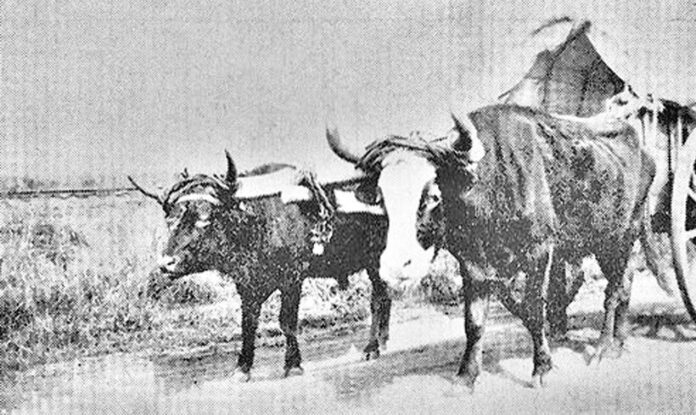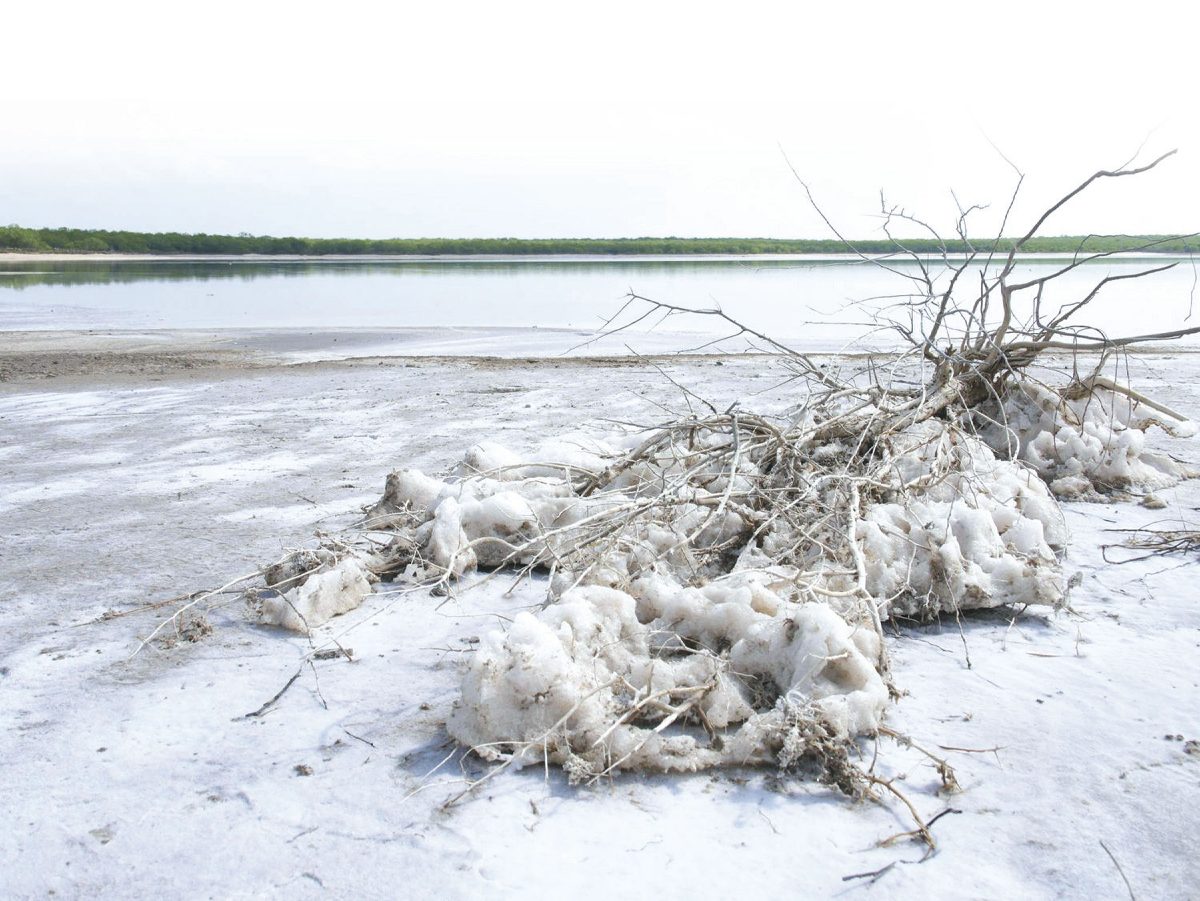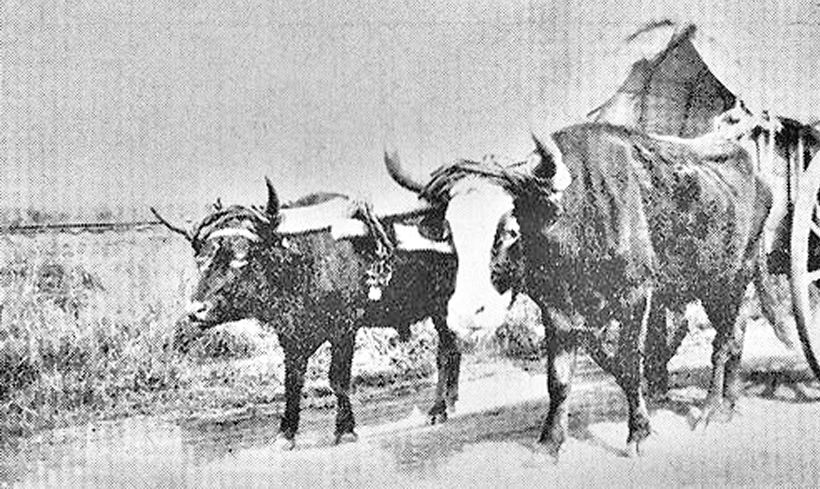BY NORMAN ROZEFF
When the Lower Rio Grande Valley was first colonized in the late 17th century, it was certainly not exploited for any of its natural resources. After all, oil and gas were not in the picture anywhere in the world at that time.
There was one great exception however when it came to a LRGV natural resource. This lay in the great salt lakes that existed just north of the Rio Grande del Norte (at times also called Rio Bravo).
Sodium chloride, common table salt, has been a valuable and extremely useful commodity for mankind since ancient civilizations came into existence. Not only is salt necessary for human dietary needs, but it has played an essential role in food preservation.
Indeed, civilization might never have advanced had it not been for man’s ability to preserve his foodstuffs when they were available in order to survive periods when they were lacking and could not be produced. Salt preservation also allowed for the transportation of food items long distances and thereby facilitated civilized trade between tribes. It was also used for tanning of animal hides.
Between the years 1686 and 1689 Don Alonso De Leon, the younger, conducted four treks in the Lower Rio Grande Valley region in search of French intruders. During these treks he mapped this unknown frontier, including nascent settlements and forty-four Indian nations living along the river.
Significantly, he was also the first to map a salt lake that would later be named la Sal del Rey or La Sal Vieja. It did not take long to begin to exploit this valuable natural resource. It became, in fact, a source promoting the economy of Matamoros. The many ox teams hauling the salt from this lake both south and toward the coast for ship transport would soon deeply etch what once were primitive trails into well-worn roads.
Modern day archaeologists have found artifacts at the lakes indicating native Americans hunter -gatherers used the salt in a number of manners. Some even recognized the therapeutic value of immersion in the briny waters.
The area upon which the lake lay was awarded in a Spanish land grant in April 1798 to Juan Jose Balli, a captain of the Royal Army of Spain as well as chief justice of the villa of Our Lady of Guadalupe de Reynosa (present day Reynosa, Mexico).
The 315,491-acre grant was given the name San Salvador del Tule, The lake lay along the grant’s eastern boundary about on-third of the grant’s length from its southern boundary. A small part of the lake lay in the grant to the east, that of Vicente de Ynojosa that was named Las Mestenas Petittas Y La Abra.
Strangely neither individual could readily and commercially exploit the salt on their land due a royal promulgation that had been made by King Charles III of Spain in January 1784. This edict stated that, “All minerals belong to my Royal Crown… and without separating them from my Royal Patrimony … not only mines of gold and silver, but also those of precious stones, copper, lead, tin, quicksilver, antimony, calamine, bismuth, rocksalt and all other stony matter, be they ores, or semi-minerals, bitumin and liquids of the earth.”
In short, the land grant did not grant the exploitation of minerals that were reserved to the king. These same restrictions continued upon Mexican independence in 1821 and were then adopted by Texas after its successful 1836 revolution. In fact, the state legislature in 1852 while confirming old Spanish and Mexican land grant titles stated that the confirmations should not be “construed so as to relinquish the rights of the state to any of the islands or salt lakes situated in the territory embraced in the act.”
Under special provision from the Crown, salt miners — salineros — dug salt from the lakes. The king received a 20 percent tax on all harvests.
Previously, in 1847, a J. N. Reynolds and H. M. Lewis had entered into a court contest for the mineral rights of La Sal del Rey. It was resolved with Reynolds paying Lewis $30,000 for the “supposed rights.”
This was immediately challenged by Jose Cardenas, an heir to Captain Balli. It was clear that unscrupulous government officials were trying to appropriate Texas public property. Eventually Federal Judge John C. Watrous was brought up for impeachment. The state had asked him to resign in 1848.
Then state senator Sam Houston stated, “I now present Judge Watrous as attempting to seize the Great Salt Lake of Texas. This lake was a reservation of the government of Texas and the only possible means of appropriating this valuable property was by influencing the courts and the Legislature.”
The judge was said to have had personal connections with land speculation in the state and was alleged to have attempted to validate forged land certificates. He was impeached but didn’t receive the senatorial votes needed to remove him from office and served on the bench until April 1870, however the seat on which he had first served was abolished in 1847.
When the Civil War commenced, salt became critical for the Confederacy. The CSA needed six million bushels of salt a year. The price on this commodity soared to $8,00 per bushel. As a result on April 17, 1862 Texas Governor Lubbock appointed Antonio Salinas of Brownsville to take possession of Sal del Rey as an agent of the state. He and other government officials proceeded to the lake where Jesus Cardenas offered to resistance to the takeover.
The importance of La Sal de Rey is outlined in the Handbook of Texas Online. It states, “In the Civil War a huge increase in the demand for salt caused the state government to take control of its mining and export. Governor Francis R. Lubbock appointed Antonio Salinas of Brownsville as controlling agent, and after allowing Jesus Cardenas, owner of the lake, to sell the salt already mined, the confederate government rushed salt to designated points by camel caravan, each camel carrying 600 pounds. Freight thefts, however, caused so many problems that the camel project was abandoned.” Eileen Mattei writes that “The wagons that smuggled southern cotton to the Mexican border port of Bagdad returned home with cargoes of salt and guns until the Yankees captured the salt lake in 1863.”
The Union had invaded South Texas in November 1863 with just under 7,000 troops. One action of note involved the 91st Illinois Infantry. It departed Brownsville on 12/31/63 and then conducted its famous raid on Salt Lake, 90 miles out in the enemy country.
The Illinois Adjutant General reported: “It captured a lake of salt two miles square, a few hundred horses, mules, and cattle, which were promptly confiscated for the good of the command. The lake we left behind, for the use of future generations. January 9, 1864, arrived safely back on the Rio Grande, after a march of over 260 miles, without the loss of a man.”
Another source credits the Second Texas Cavalry USA with destroying the salt works at La Sal del Rey a month earlier.
It was a revision in the State Constitution of 1867 that allowed mineral ownership to be held by surface land owners. This was brought forth as many believed the old system jeopardized land titles and likely restricted development of the state’s mineral resources. Railroad expansion was also a factor for those desiring industrial progress and prosperity.
There are three salt lakes at present. The east two are in Willacy County and are named La Sal Vieja The west one is considerably larger. It is over two miles at its greatest width and contains 2,475 acres with the east one about 1 ¼ mile in its greatest width and having 720 acres. Their depths are only 3 to4 feet but may rise to about 10” depth after heavy rains.
The waters are underlain by almost pure rock-crystal salt, the depth of which is unknown. The third lake is called La Sal del Rey and is in Hidalgo County. It is one mile its its greatest width. It is more renown than the other two lakes due to its quality of salt. If salt is removed as a block from the lakes it is soon replenished by nature as the usual strong southeast winds act as a mixmaster.
In the early 1990s La Sal del Rey, with its estimated 4 million tons of salt, was the private property of Eloise Campbell. As late as 1978 La Sal Vieja was owned by eight different individuals, companies, foundations, or water-control districts in nine different tracts. Salt mining ceased in La Sal del Rey in the 1930s and in La Sal Viejo in the 1920s.
The Lower Rio Grande Valley National Wildlife Refuge now manages the 5,400 acres encompassing the La Sal del Rey and surroundings where an abundance of wildlife and birds are to be found. It was acquired in 1992. The lake is accessible to visitors, but the one mile hike to reach it has to be taken into consideration.







